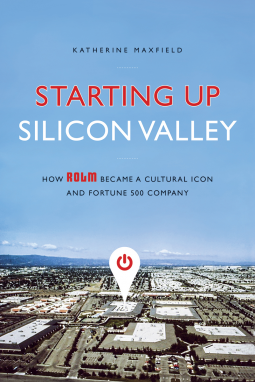
Starting Up Silicon Valley
How ROLM Became a Cultural Icon and Fortune 500 Company
by Katherine Maxfield
This title was previously available on NetGalley and is now archived.
Send NetGalley books directly to your Kindle or Kindle app
1
To read on a Kindle or Kindle app, please add kindle@netgalley.com as an approved email address to receive files in your Amazon account. Click here for step-by-step instructions.
2
Also find your Kindle email address within your Amazon account, and enter it here.
Pub Date Apr 08 2014 | Archive Date May 09 2014
Greenleaf Book Group | Emerald Book Company
Description
Decades before Facebook, seven years before Apple, four young men were hard at work in a prune-drying shed designing “the world’s toughest computer.” That was the founding of ROLM Corporation, at a time when the orchards of Santa Clara County were being transformed into what would become Silicon Valley.
By 1984—merely fifteen years later—ROLM was a Fortune 500 company with worldwide offices and a park-like campus. That same year, IBM bought the company in the biggest deal Silicon Valley had ever seen. By then, Silicon Valley was the world’s center of innovation, with a hallmark culture very different from the rest of corporate America. ROLM set the benchmark for that culture by providing significant financial rewards for smart, successful work, and an environment where employees could unwind—swimming laps, playing tennis, or dining brookside. ROLM’s influence extends today, in campuses like those of Google and Cisco, where onsite masseuses and sushi chefs are commonplace.
Starting Up Silicon Valley reveals
• leadership’s challenges, doubts, and convictions, from start-up to buyout and beyond;
• how ROLM’s technological innovations disrupted two industries;
• why ROLM was known as a Great Place to Work (GPW) and how that style can influence today’s workplace;
• the dirty tricks that giant AT&T undertook to smash competition that threatened its domain; and
• the hopes and frustrations of an IBM merger, from both sides of the story.
Humorous anecdotes and the wisdom of some of Silicon Valley’s most respected leaders make Starting Up Silicon Valley an intimate story of one of the Valley’s most important and culturally influential companies.
Advance Praise
KIRKUS REVIEW
Business history that will satisfy anyone captivated by the Silicon Valley.
Maxfield has written an engaging story about ROLM, a Silicon Valley startup that made its mark in the 1970s and ’80s. According to this insider account based on primary sources and interviews, ROLM was a model of Silicon Valley entrepreneurship that future startups sought to emulate long before consumer technology and social media companies captured the high-tech spotlight. ROLM’s innovative use of emerging digital technologies challenged AT&T’s monopoly position in the telephony business by helping companies save millions of dollars and improving office workers’ productivity. Maxfield fleshes out the story with engineering details, financial data, business strategies and management lessons that will appeal to MBAs eager to create their own success. ROLM’s founders enjoyed extraordinary success in two distinct businesses—selling digital phone systems to businesses and making military grade computer systems for the Department of Defense. In its heyday, ROLM was a great place to work, with corporate perks such as 12-week sabbaticals for all employees—at full pay—after every sixth year of employment. With tennis courts, a gym, two pools, a gourmet cafeteria and landscaped grounds, its campus headquarters in Santa Clara, Calif., set a high bar for other companies competing for engineering talent during the late 1970s through mid-1980s. It’s easy to identify with the author’s sadness at how this story ends. ROLM was sold to IBM in 1984, and IBM sold ROLM to Siemens in 1988. The author draws from materials collected by the Silicon Valley Historical Association, newspaper and magazine articles, and interviews with the founders and former employees of ROLM to write a corporate history unusual in its candor. Readers don’t need to know the difference between a PBX and a CBX—although they’ll know after reading this book—to appreciate the intense emotions and exuberant personalities Maxfield portrays. A favorite among employees was ROLM executive Leo Chamberlain, known for “Leo-isms” such as being “ ‘up to our ass in alligators,’ a phrase he used whenever the going got tough.” Few authors have Maxfield’s knack for describing both the forest and the trees, which makes her history of ROLM a worthy model for other histories of Silicon Valley companies.
Corporate history with enough drama for a movie.
Available Editions
| EDITION | Other Format |
| ISBN | 9781937110628 |
| PRICE | $21.95 (USD) |



